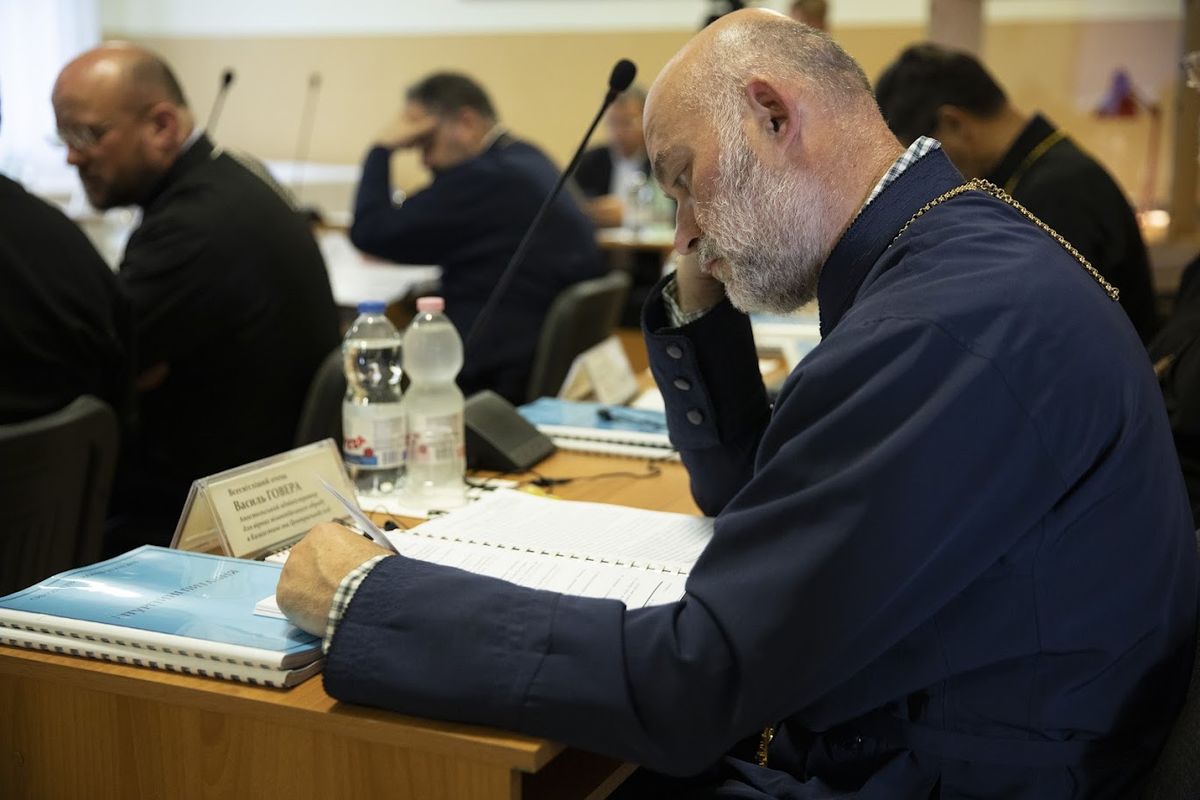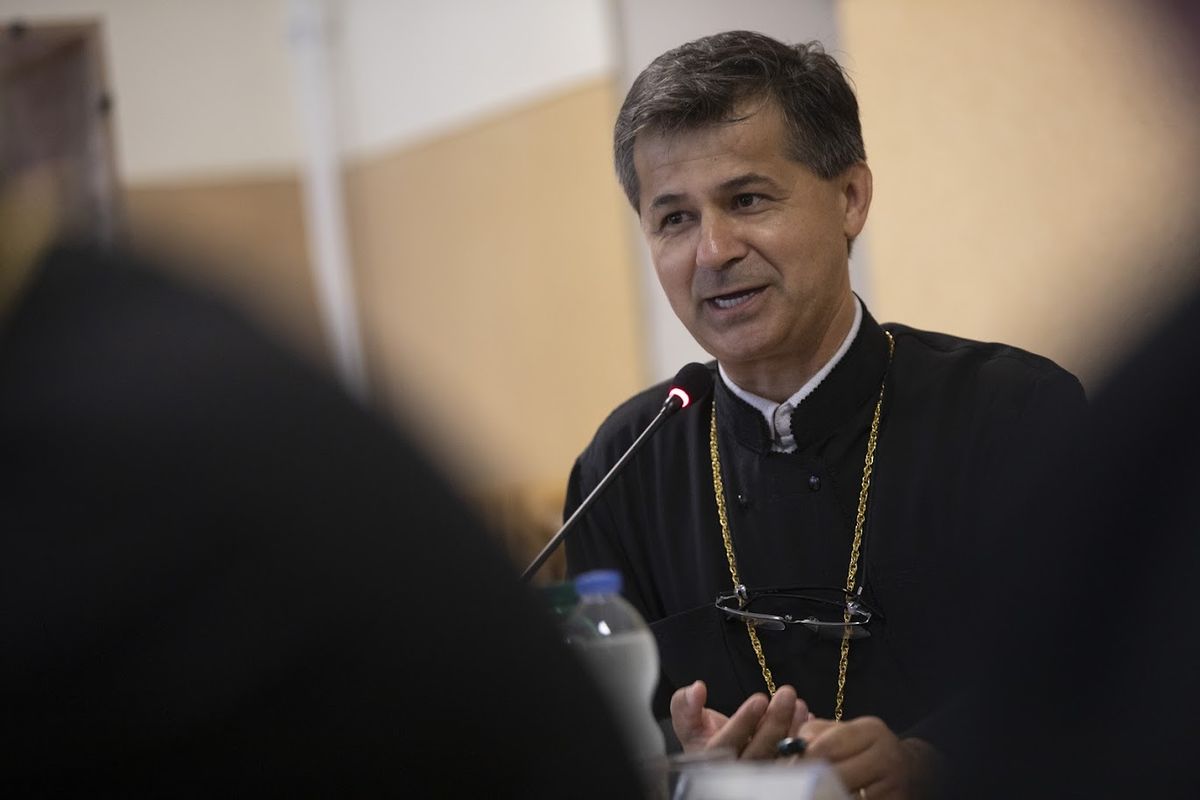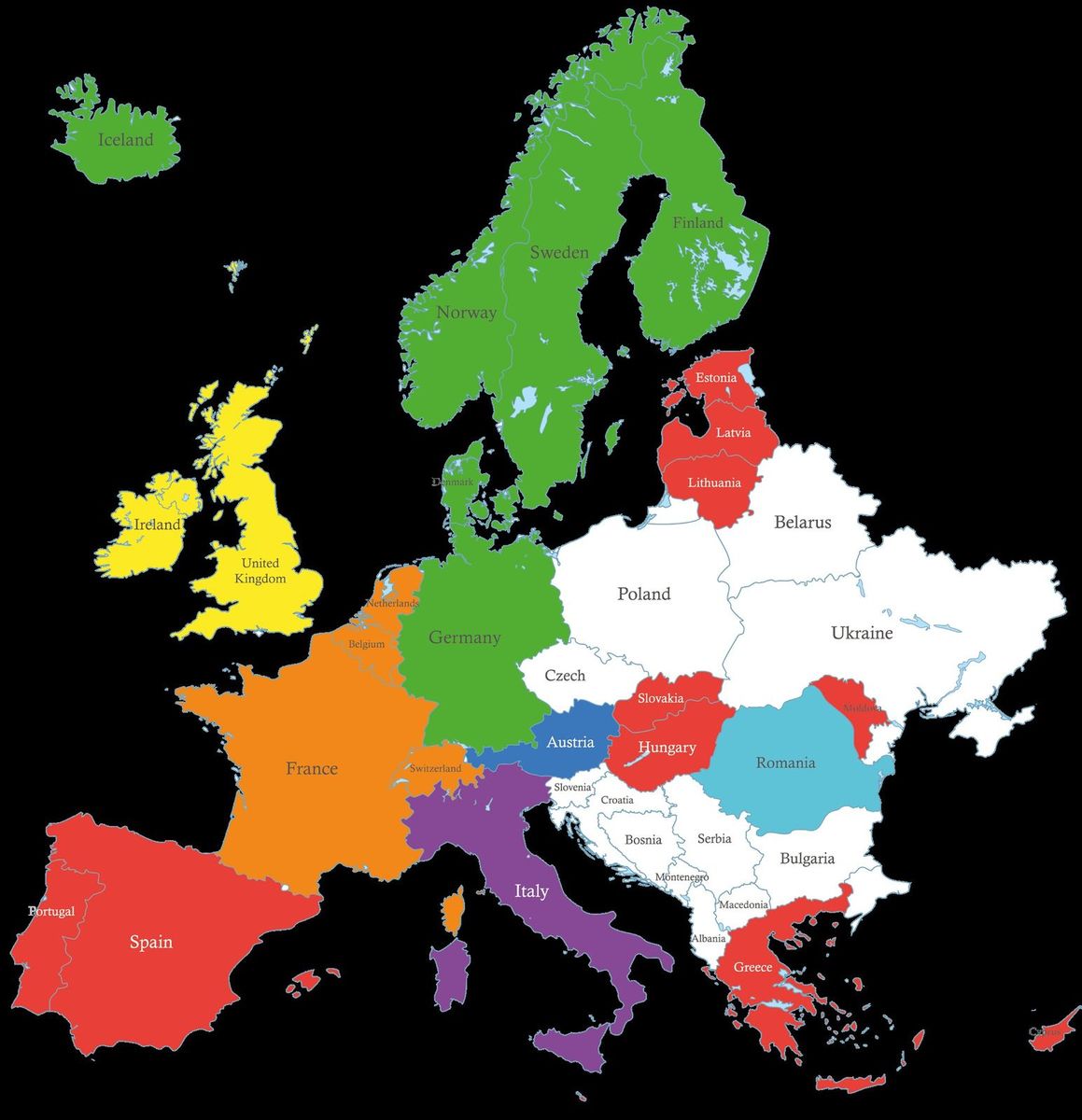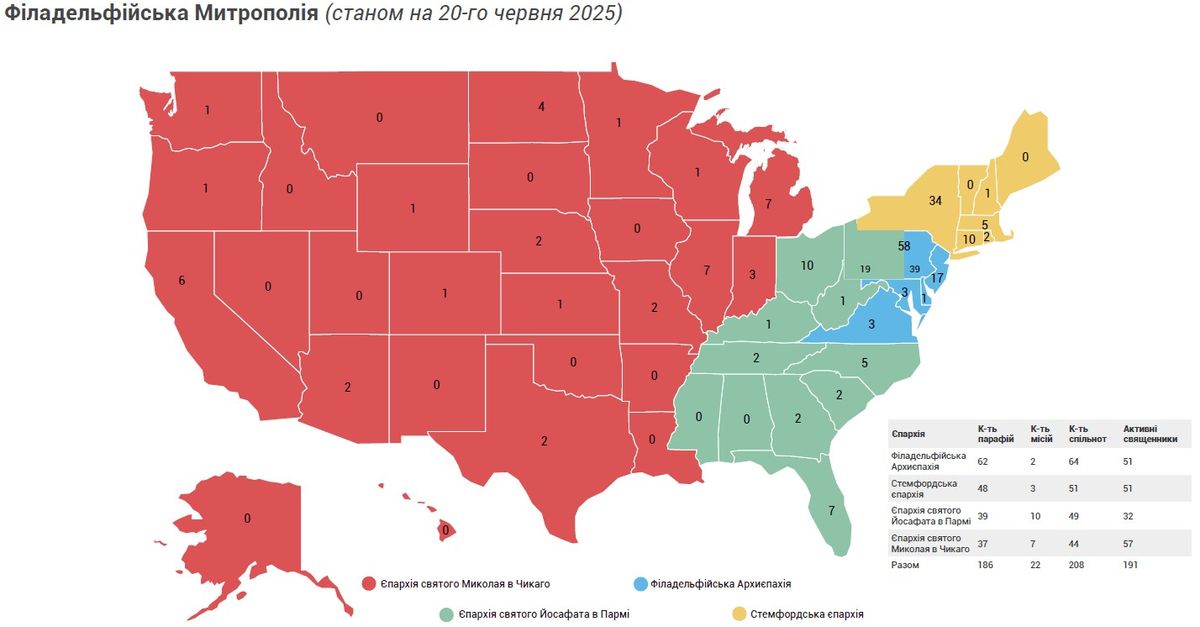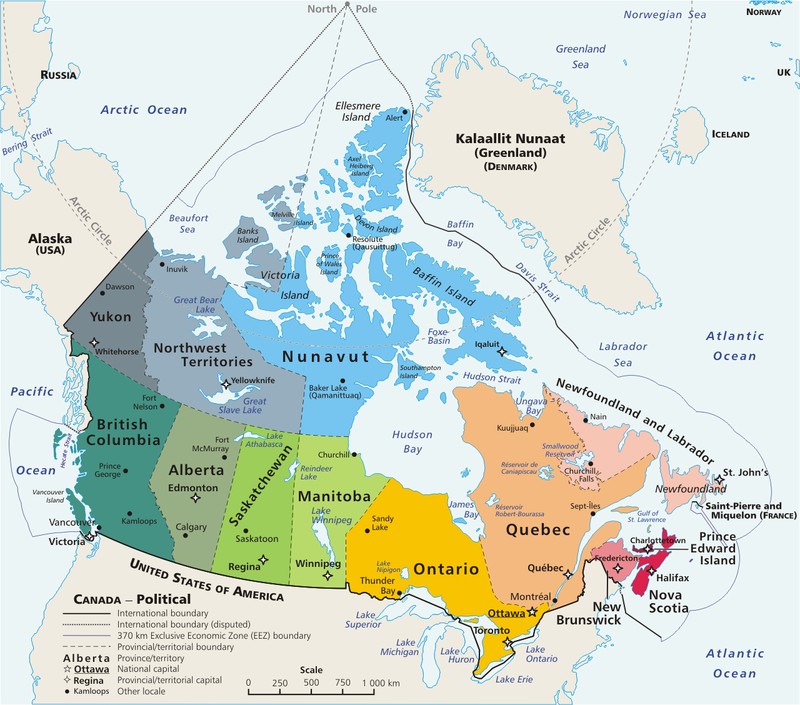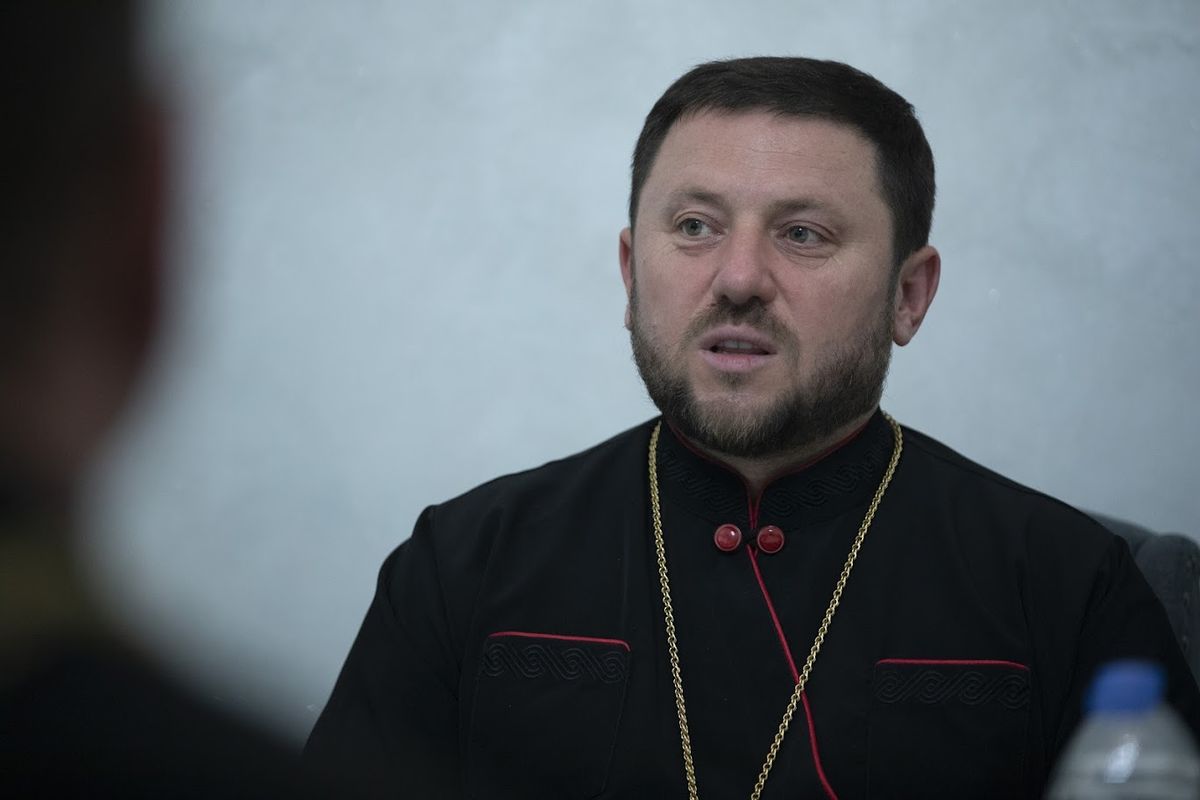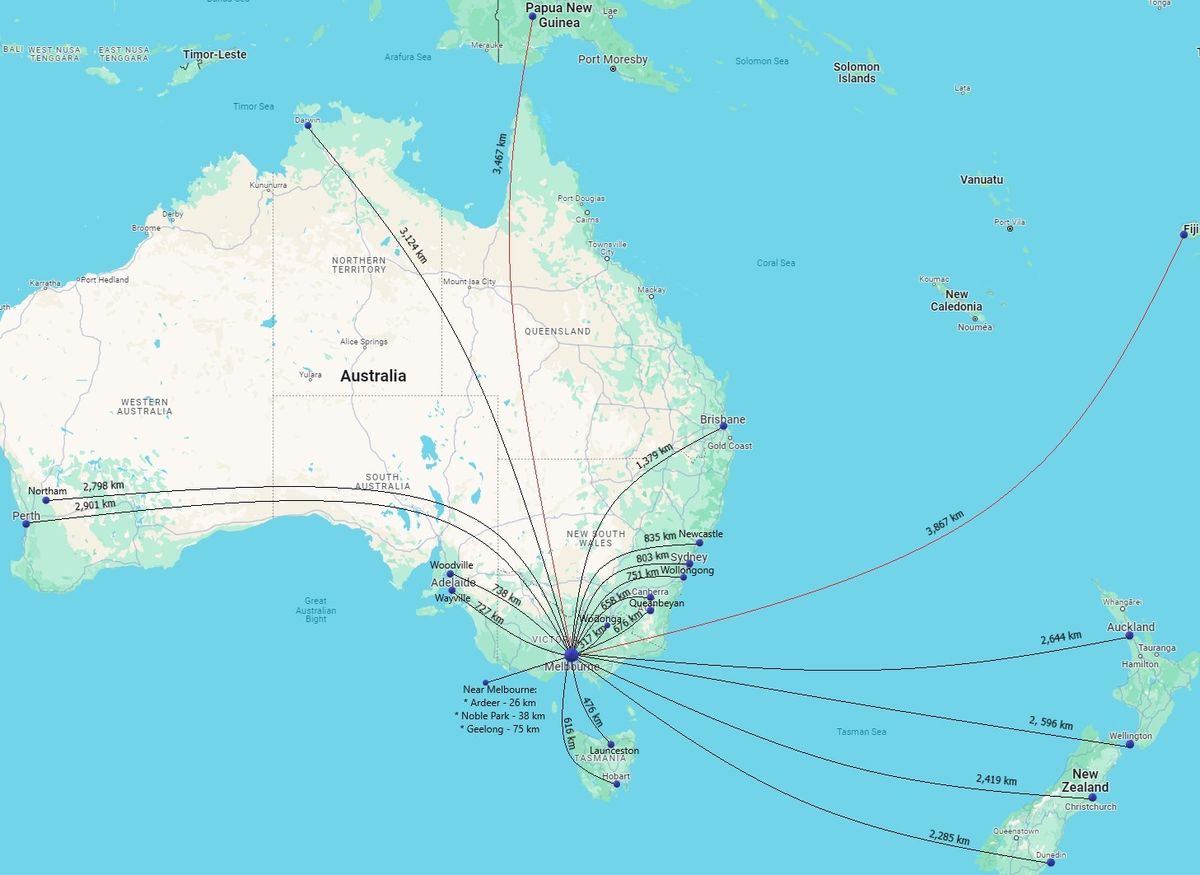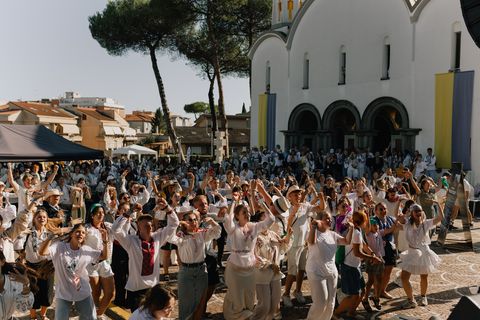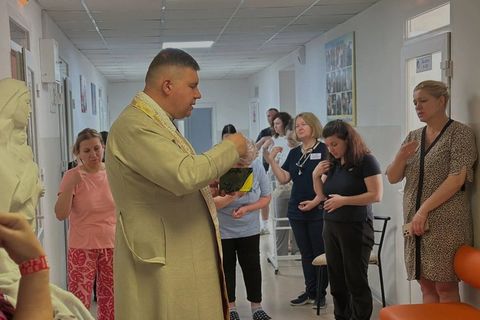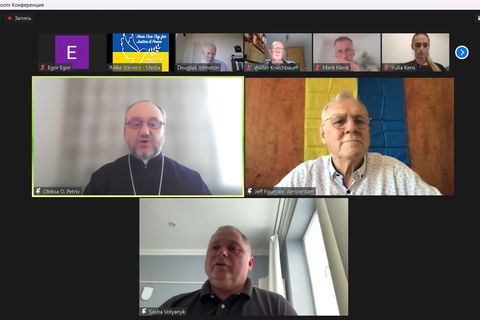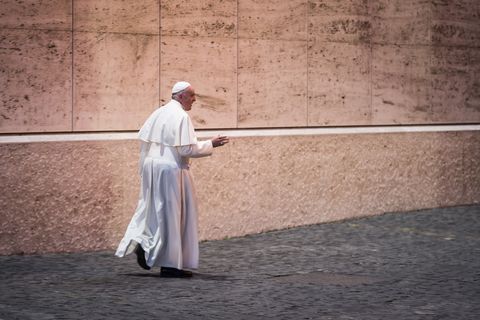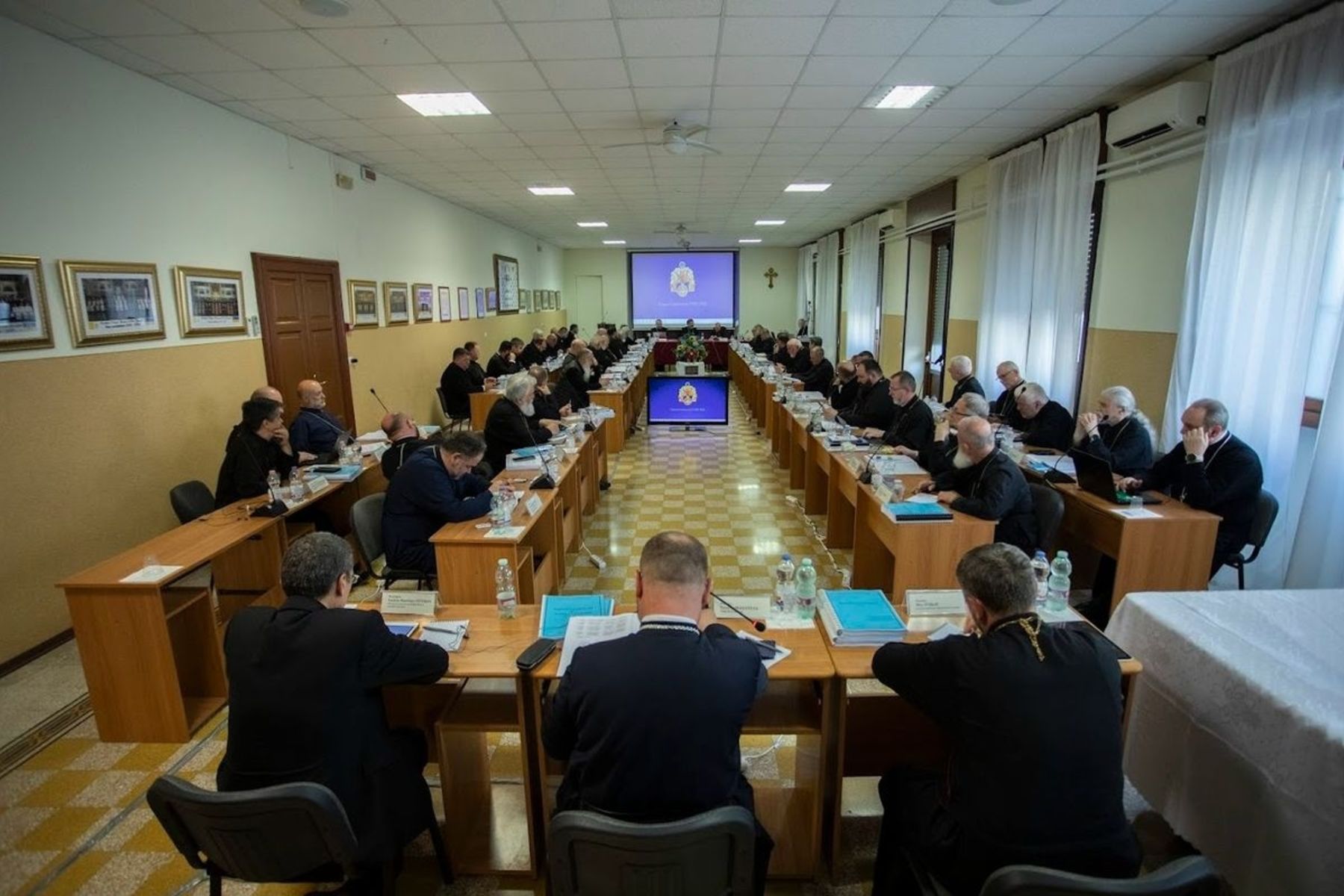
The Global Reach of the UGCC: From Kyiv’s Patriarchal Cathedral to Fiji and the Missions of Paraguay
On the fifth day of working sessions of the Synod of Bishops of the Ukrainian Greek Catholic Church—held at the Ukrainian Pontifical College of St. Josaphat in Rome—the focus was on reviewing the pastoral situation across various metropolias and regions of the global Ukrainian Greek Catholic Church.
During the presentations, priests took the lead in reporting on the pastoral situation.
Austria
Father Yuriy Kolasa, Vicar General of the Archbishop of Vienna for Eastern Catholic Churches in Austria, spoke about the life and ministry of Ukrainian faithful and clergy in this country, where they have no hierarchy of their own and are therefore under the care of the Archbishop of Vienna, currently Cardinal Christoph Schönborn. The Ordinariate in Austria provides pastoral care for about 5,000 Greek Catholics, who are served by 19 priests and one seminarian. The faithful are united around 20 parish centers. However, a significant challenge is the lack of churches and premises for meetings and various ministries.
Kazakhstan and Central Asia
Next, Father Vasyl Hovera, Apostolic Administrator for Catholics of the Byzantine Rite in Kazakhstan and Central Asia, outlined the state of development of the UGCC in Kazakhstan and Uzbekistan. Today, there are seven parishes in these countries, six in Kazakhstan and one in Uzbekistan. Six priests and two sisters work in these parishes. Among the challenges facing the Church in these areas today, Fr. Vasyl highlighted the emigration of Ukrainians from these countries, the threat of assimilation and, consequently, the loss of their language, culture, and traditions, as well as the aging of parishioners. Despite this, the Church continues to serve those in need.
Romania
Subsequently, Fr. Vasyl Kolopelnyk, Vicar General for Ukrainian Greek Catholics in Romania, detailed briefly the challenges and achievements of Ukrainians in the neighboring country, focusing on the new wave of refugees from Ukraine who are seeking safety and peace for their families. “We thank our mother Ukrainian Greek Catholic Church for the constant communication and cooperation that we carry out through the Pastoral and Migration Department,” the priest said in his comment to the press service of the Secretariat of the Synod of Bishops of the UGCC. He added that currently, 11 priests serve Ukrainian Greek Catholics in Romania in 20 parish communities. “The local Romanian Greek Catholic bishop, Vasile Bizău, ordinary of the Eparchy of Maramureș, is always open to effective cooperation, encouraging us to preserve the richness of our own rite and traditions,” said Fr. Vasyl Kolopelnik.
Kyiv Metropolia
Following that, the members of the Synod of Bishops of the UGCC devoted time to reports from their fellow bishops on the pastoral situation in Ukraine.
His Beatitude Sviatoslav, Father and Head of the UGCC, described pastoral care in the Kyiv Metropolia, which unites the Kharkiv, Donetsk, Crimean, Odessa, and Lutsk exarchates and the Kyiv Archeparchy.
He specifically noted that official statistics indicate that about 2 million people identify themselves as Greek Catholics in these territories. However, only 306 priests provide pastoral care for them. Hence, the Kyiv Archeparchy alone currently needs 50 priests to meet all the spiritual needs of the people. The lack of priests is therefore quite noticeable in Kyiv, Odessa, Donetsk, Kharkiv, and Lutsk. His Beatitude Sviatoslav also spoke of the Kyiv Theological Seminary, which is a “marvelous blessing.”
This is from there that a significant number of priests who begin their ministry in these areas come today. And this is despite the challenges, the proximity of the front line, and even despite the fact that “it is accurately the exact part of Ukraine, namely the eastern, northern, and southern regions, that is the hardest place to live through today.”
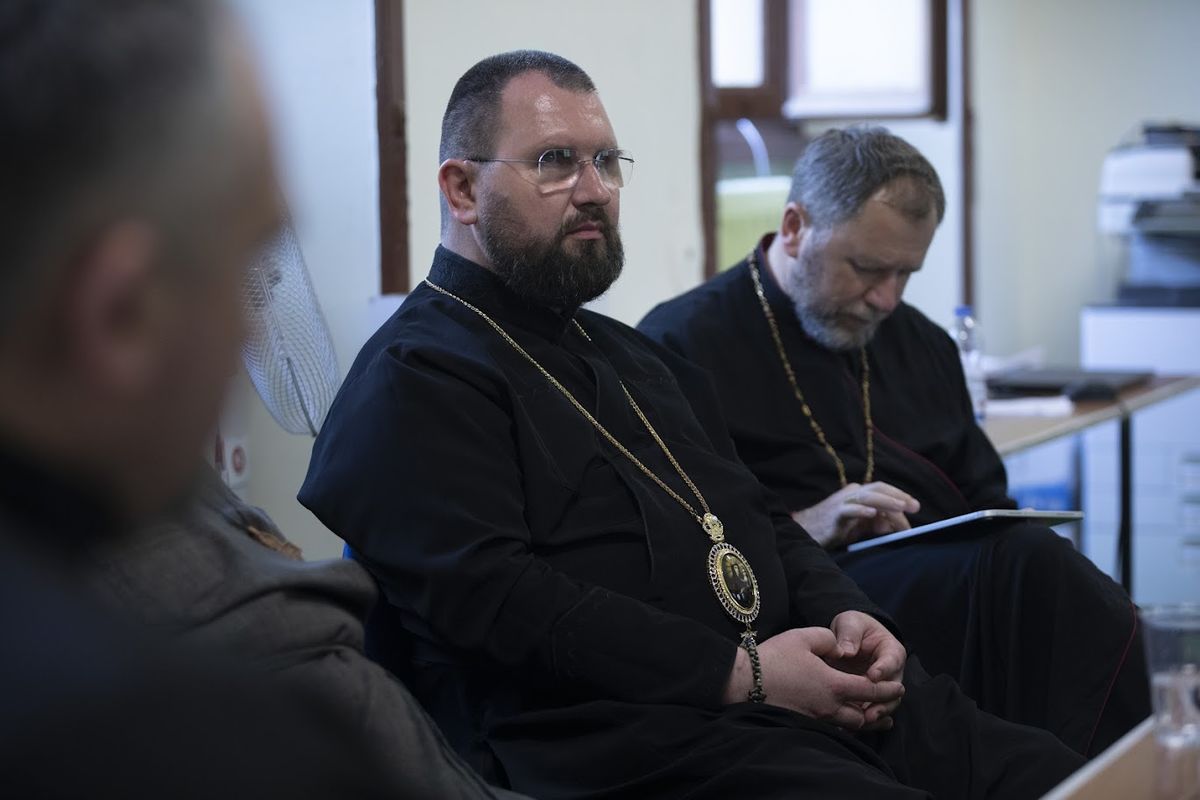 Photo: Bishop Maksym Ryabukha, Exarch of Donetsk
Photo: Bishop Maksym Ryabukha, Exarch of Donetsk
Donetsk Exarchate
Bishop Maksym Ryabukha, Exarch of Donetsk, emphasized the severe situation in the exarchate, where the front line is rapidly approaching the Dnipro River. Despite threats and constant shelling, church life continues: meetings of the community “Mothers in Prayer” are held, pilgrimages to Zaporizhia take place, a medical center has been opened in Dnipro, and the first year of study at the Catholic school in Zaporizhia is coming to an end. Youth ministry is actively developing, catechesis is being conducted in 14 parishes, and 89 catechists are receiving education. Young people are demonstrating a mature outlook, a clear vision of their future, and are bringing entire families to the Church.
Odessa Exarchate
Bishop Mykhaylo Bubniy, Exarch of Odessa, reported on the difficult situation in southern Ukraine: the right bank of the Dnipro River and part of Kherson are heavily damaged. Despite the danger, priests remain faithful to their ministry. At the same time, the exarchate is encountering a demographic crisis in villages, where schools are being forced to close due to the decline of rural communities. The Church’s current strategy is aimed at enhancing pastoral care in regional and district centers.
 Photo: Bishop Mykhaylo Bubniy, Exarch of Odessa
Photo: Bishop Mykhaylo Bubniy, Exarch of Odessa
Kharkiv Exarchate
Bishop Vasyl Tuchapets, Exarch of Kharkiv, spoke about the aggravation of the situation on the front lines, especially in the Sumy and Kupiansk areas, from where people are being evacuated to Kharkiv and Sumy. The Church is aiding displaced persons and the military, organizing classes for children in closed schools and kindergartens. Despite ongoing shelling—particularly in Izyum—priests continue their ministry, though there remains a need for clergy in other cities.
Bishop Emeritus Ihor Isichenko, who has lived in Kharkiv for over 50 years, noted that, despite the pain and destruction, the city is shaping a new identity of fighters. In this process, the Church’s role is especially vital—it is called to infuse this transformation with spiritual meaning. He emphasized that what is needed are not just priests, but true spiritual leaders who are able to understand and support the community.
Lviv, Ternopil-Zboriv, and Ivano-Frankivsk Metropolias
Afterwards, Archbishop Teodor Martynyuk, Archbishop and Metropolitan of Ternopil-Zboriv, spoke about the pastoral situation in the three metropolias of Western Ukraine—Lviv, Ternopil-Zboriv, and Ivano-Frankivsk.
According to the archbishop, the key areas of pastoral care today include:
- Catechesis for various groups of the faithful (adolescents, young adults, middle-aged individuals, and the elderly), along with new methods of evangelization;
- Pastoral care for religious vocations;
- Pastoral care for families, with a focus on preserving the institution of the family;
- Healing the wounds of war, including care for families of the deceased, those missing in action, military families, people with disabilities, those living in poverty, and orphans;
- Chaplaincy in educational and medical institutions;
- Advocacy for Christian values in society and within state structures;
- Liturgical prayer.
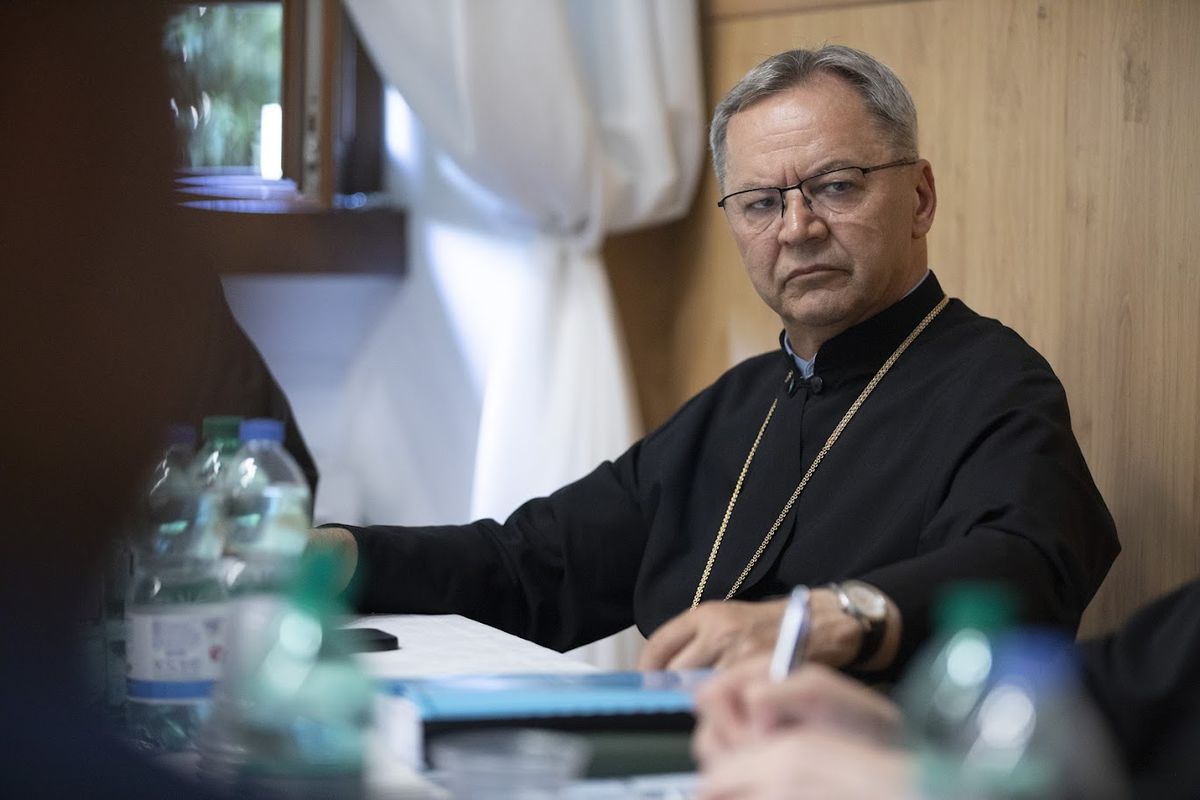 Photo: Yevhen Popovych, Archbishop and Metropolitan of Przemysl-Warsaw
Photo: Yevhen Popovych, Archbishop and Metropolitan of Przemysl-Warsaw
Poland
Metropolitan Yevgen Popovych of Przemyśl and Warsaw presented the pastoral circumstance in three archeparchies in Poland: the Archeparchy of Przemyśl and Warsaw, the Eparchy of Wrocław and Koszalin, and the Eparchy of Olsztyn and Gdańsk. According to him, there are about 70,000 faithful in Poland who regularly participate in the life of parish communities. At the same time, there is a growing concern about tens of thousands—perhaps even hundreds of thousands—of Ukrainians in Poland who do not actively participate in parish life, attending church only occasionally. Assimilation also remains a significant problem, which is why the Greek Catholic Church constantly emphasizes the importance of teaching catechism in schools according to its rite.
Western Europe
The next speaker was Bishop Bohdan Dzyurakh, who presented the pastoral situation in Western European countries to the bishops of the Synod. His report covered countries with UGCC ecclesiastical structures, such as the Eparchy of the Holy Family based in London (United Kingdom), the Eparchy of St. Volodymyr the Great, based in Paris (France), the Apostolic Exarchate for Ukrainians of the Byzantine Rite in Germany and Scandinavia, the Apostolic Exarchate for Ukrainian Catholics in Italy, the Ukrainian Greek Catholic Vicariate in Romania, the Ordinariate for the Faithful of Eastern Catholic Churches in Austria, as well as countries where such structures do not exist, with the Pastoral and Migration Department of the UGCC providing care for the clergy and faithful.
Citing statistics, Bishop Bohdan Dzyurach noted that, according to official data, there are approximately 2.8 million Ukrainians living in Western Europe, of whom just over 330,000 are under pastoral care. This care is provided by 279 priests and 9 deacons across 549 parish centers, supported by 59 consecrated persons and 15 seminarians.
Photo: Structures of the UGCC in Western Europe: yellow color — Eparchy of the Holy Family based in London (Great Britain), green color — Apostolic Exarchate for Ukrainians of the Byzantine Rite in Germany and Scandinavia, orange color — Eparchy of St. Volodymyr the Great based in Paris (France), purple — Apostolic Exarchate for Ukrainian Catholics in Italy, red — Pastoral and Migration Department of the Ukrainian Greek Catholic Church, blue — Ordinariate in Austria, light blue — General Vicariate for Ukrainian Greek Catholics in Romania.
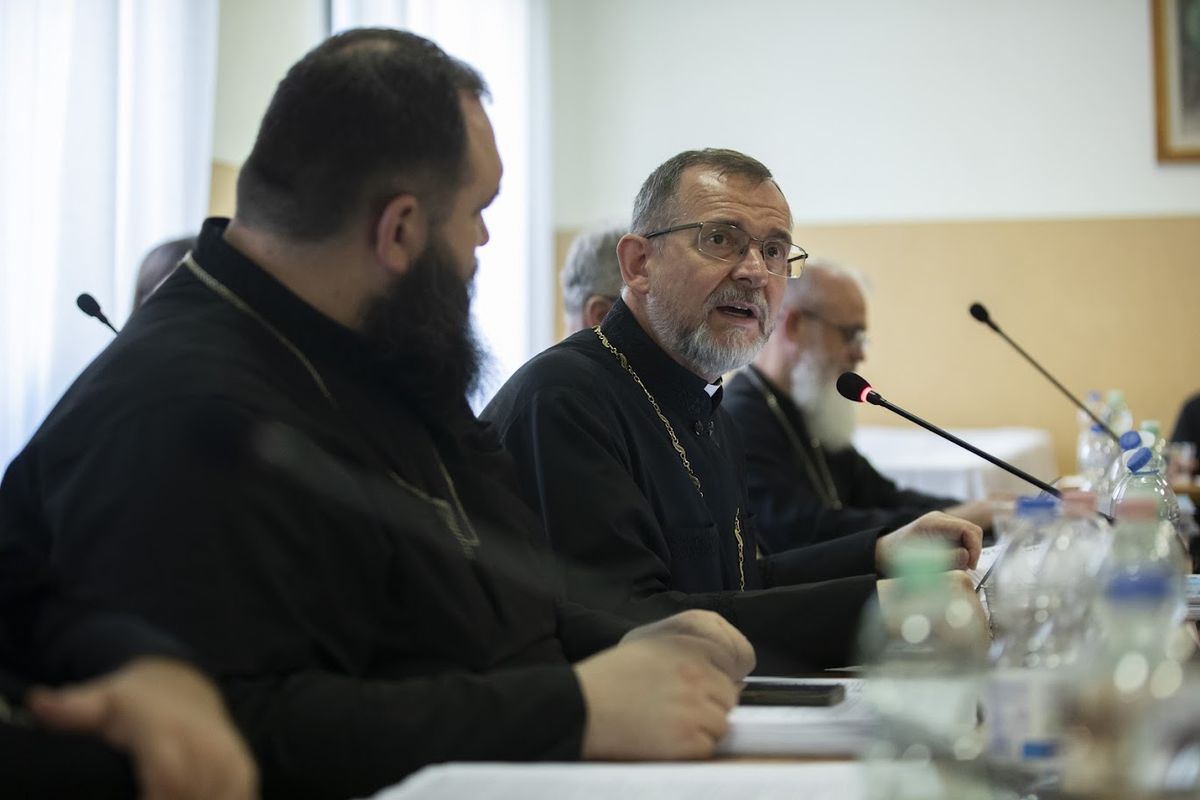 Photo: Bishop Bohdan Dzyurakh, Apostolic Exarch in Germany and Scandinavia
Photo: Bishop Bohdan Dzyurakh, Apostolic Exarch in Germany and Scandinavia
Metropolia of Philadelphia
The Philadelphia Metropolia, which unites the Archeparchy of Philadelphia, the Eparchy of Stamford, the Eparchy of St. Nicholas the Wonderworker based in Chicago (Illinois, USA) and the Eparchy of St. Josaphat, based in Parma (Ohio, USA), according to Metropolitan Borys Gudziak, provides pastoral care in 208 parishes and mission centers. The pastoral needs of the faithful are currently addressed by 191 priests.
In his report, Metropolitan Borys also highlighted the activities of the Healing Wounds of War (HWW) Fund in Ukraine. Established in January 2024 by four eparchies of the Ukrainian Catholic Church in the United States, the fund is a follow-up to the earlier humanitarian initiative, Humanitarian Aid for Ukraine. Since the start of the full-scale Russian invasion, the fund has supported over 190 diverse projects and programs, raising millions of US dollars. In 2024 alone, 93 projects were endorsed. Currently, the fund focuses its efforts on three key areas: psychological, spiritual, and physical assistance.
 Photo: Bishop Andriy Rabiy, Auxiliary Bishop of the Winnipeg Archeparchy
Photo: Bishop Andriy Rabiy, Auxiliary Bishop of the Winnipeg Archeparchy
Metropolia of Winnipeg
Next, Bishop Andrey Rabiy, Auxiliary Bishop of the Archdiocese of Winnipeg, presented the pastoral report of the Metropolia of Winnipeg. The report highlighted both the achievements and challenges facing the Church in Canada amid intense social change and the war in Ukraine.
The report indicated that Ukrainian parishes across Canada have become vibrant centers of solidarity in response to the humanitarian crisis caused by Russia’s full-scale invasion of Ukraine. Parishioners’ efforts to socially integrate newcomers have revitalized communities and opened new opportunities for pastoral work. The report highlights successes in education, catechesis, and infrastructure development—demonstrating the strategic vision and foresight of the Church’s leadership.
At the same time, Bishop Andriy addressed underlying systemic challenges facing the metropolia: secularization, the decline of traditional communities, a shortage of vocations to the priesthood, and financial instability. Despite sincere efforts, integrating newly arrived Ukrainians remains difficult and calls for fresh approaches to evangelization and pastoral care.
“The greatest challenge today is to find a balance between serving newcomers and supporting established communities; between meeting immediate needs and honoring historical heritage; and between openness to contemporary society and the preservation of our spiritual identity,” emphasized Bishop Andriy.
The report notes that overcoming these challenges will require strategic unity, bold pastoral decisions, and the active involvement of the laity. The future of the Ukrainian Catholic Church in Canada, according to Bishop Andriy, depends on the ability to jointly transform challenges into new opportunities to evangelize the Gospel.
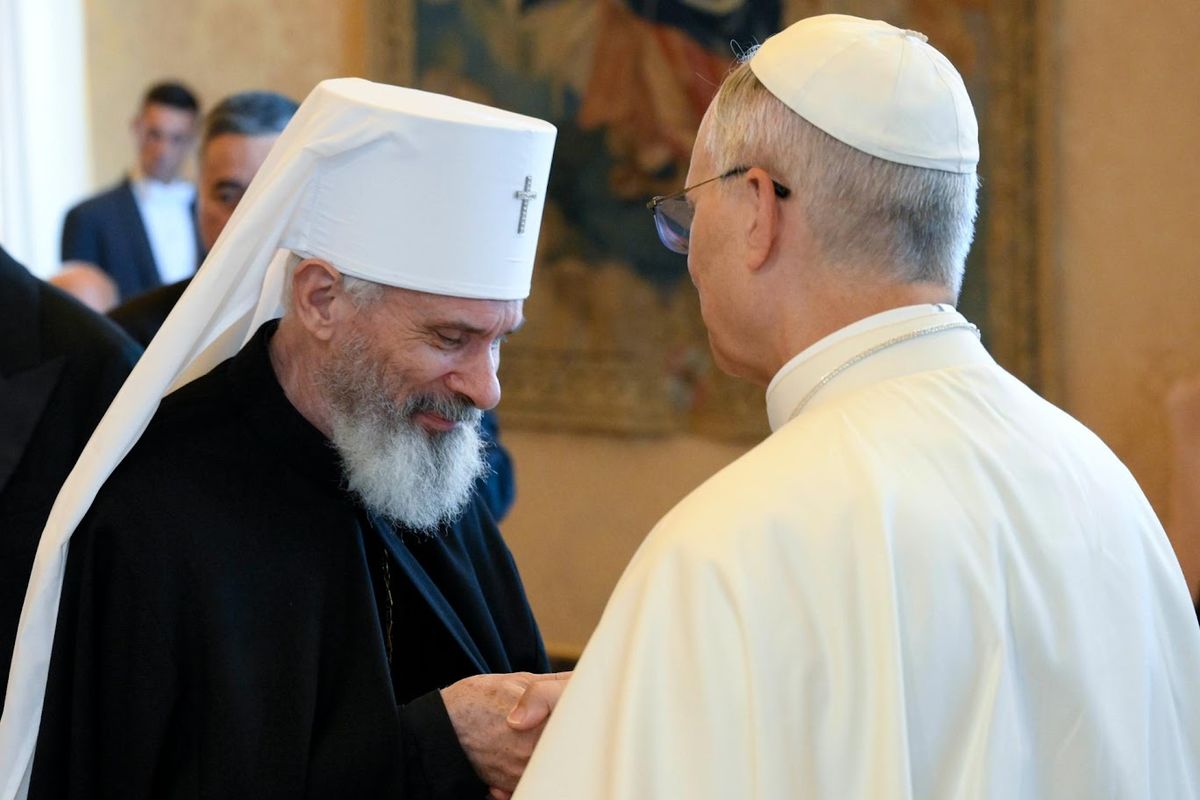 Photo: Bishop Volodymyr Kovbych, Archbishop and Metropolitan of Curitiba
Photo: Bishop Volodymyr Kovbych, Archbishop and Metropolitan of Curitiba
Metropolis of Curitiba
The Metropolia of Curitiba, about which Metropolitan Volodymyr Kovbych spoke during the Synod of Bishops of the UGCC, consists of the Archeparchy of St. John the Baptist in Curitiba and the Eparchy of the Immaculate Conception of the Blessed Virgin Mary, based in Prudentópolis.
According to Bishop Volodymyr, the Eparchy of the Immaculate Conception of the Blessed Virgin Mary consists of 12 parishes and approximately 120 affiliated congregations. In the Archeparchy of Curitiba, there are 17 parishes with about 100 communities. The ruling bishops, Volodymyr Kovbych and Myron Mazur, try to visit all parish communities time and again.
The parishes and churches in Brazil are served by 22 eparchial priests and 51 Basilian monks. “Institutes of consecrated life serve as a great source of strength that the Curitiba Metropolia can count on in its pastoral and evangelization missions. The Sisters Servants of Mary Immaculate, the Sisters of St. Joseph, the Catechist Sisters of St. Anne, and the catechists of the Secular Institute of the Heart of Christ arrive to help with pastoral work. Their presence is very valuable because they teach catechism, church chanting, prepare children for their First Holy Confession and Holy Communion, as well as maintain the cleanliness and beauty of the churches,” said Metropolitan Volodymyr Kovbych.
According to the speaker, four church communities function in the parishes: the Apostolate of Prayer, the Eucharistic Knights, Marian Youth, and communities of men for prayer on the rosary. To improve the coordination of prayer and social ministry, a Metropolitan Council of Lay People was recently established.
“Today, pastoral care in the metropolia has seven main ministries: catechetical pastoral care, liturgical pastoral care, pastoral care of religious vocations, family pastoral care, youth pastoral care, pastoral care of communication, and pastoral care of social action,” the metropolitan concluded.
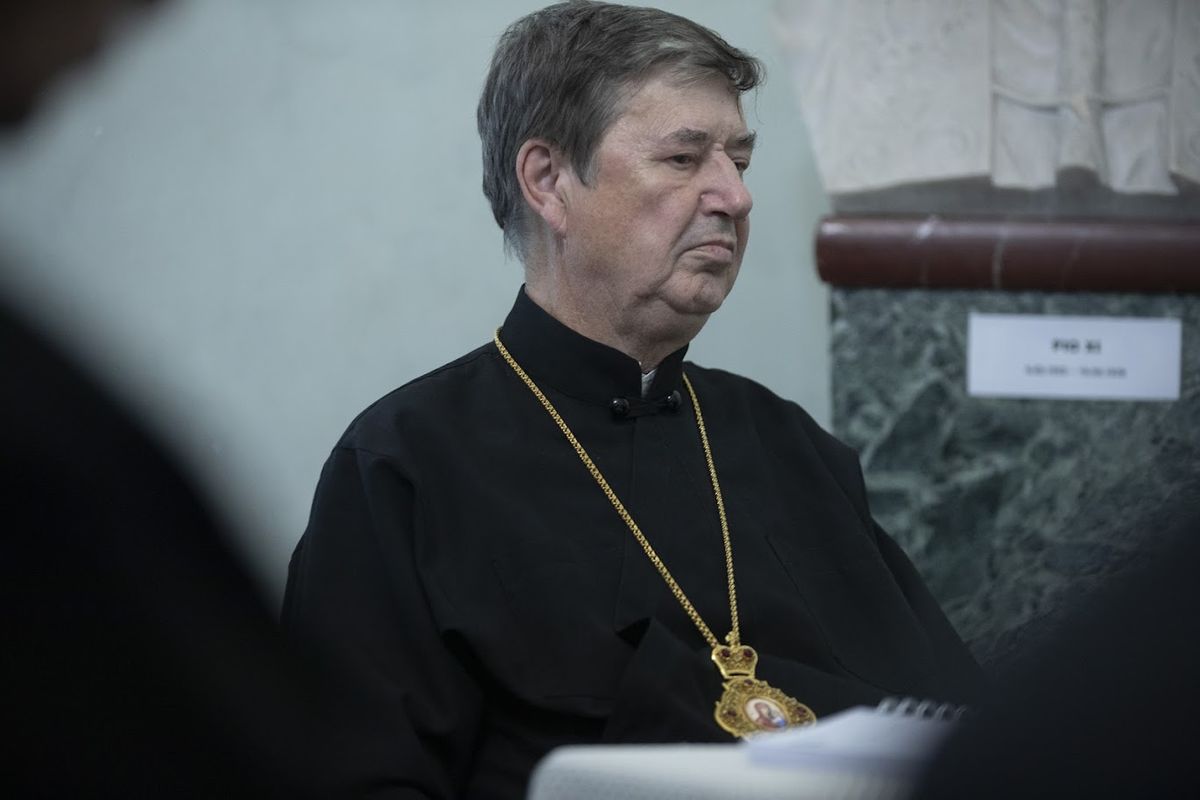 Photo: Bishop Daniel Kozelinski, Bishop of Santa María del Patrocinio en Buenos Aires, Argentina
Photo: Bishop Daniel Kozelinski, Bishop of Santa María del Patrocinio en Buenos Aires, Argentina
Argentina and Paraguay
The Eparchy of the Protection of the Blessed Virgin Mary, based in Buenos Aires, serves the faithful in Argentina. Its ruling bishop, Daniel Kozelinski, spoke to members of the Synod of Bishops of the Ukrainian Greek Catholic Church about the life and activities of the Ukrainian Catholic Church in this region.
According to him, today there are five Basilian monks serving in Argentina, working in the parishes of the Apostles and Obera. Most of the priests, namely eight, belong to the eparchial clergy. All of them serve in ten parishes and over fifty pastoral centers.
Since 2010, there has been a monastery of Studite monks in the eparchy, located in the city of Piquén, in the southern region of the province of Buenos Aires.
According to Bishop Daniel Kozelinski, the main principles of pastoral ministry in the Eparchy of Buenos Aires include the regular celebration of the Divine Liturgy at least twice a month in each community, even when there is a shortage of priests. Of particular importance are visiting families while considering the socio-cultural context of each parish, supporting priests in remote areas, and encouraging an active role for the laity in pastoral care and administration.
Special attention is given to the catechesis of children and young people, the formation of catechists, and the challenges associated with the assimilation of young people and the dominance of the Latin rite in educational institutions.
The eparchy has its own seminary, where candidates for the priesthood are prepared for practical liturgical life and become attuned to the reality of the future environment in which they will carry out their priestly ministry.
Speaking about Paraguay, Bishop Daniel recalled that in early 2013, at the request of the Synod of Bishops of the UGCC, the Holy See appointed Bishop Daniel Kozelinski as apostolic visitor for the Ukrainian Greek Catholic community in Paraguay. Today, one priest serves Ukrainians in a parish that also unites 10 pastoral centers.
Australia
According to Cardinal Mykola Bychok, Eparch of the Eparchy of Sts. Peter and Paul of Melbourne for Ukrainian Catholics in Australia, New Zealand and Oceania, the eparchy currently consists of 10 parishes and 11 missions; has 17 active priests, 5 emeritus priests, 4 permanent deacons, 9 Basilian sisters, and 7,256 faithful.
“Since the war began in Ukraine, about 15,000 people have arrived in Australia and New Zealand, half of whom have already returned to Ukraine or Europe. Approximately 4,500 have obtained permanent residency in Australia. Most of these newcomers come from eastern Ukraine, are not members of the Church, and rarely attend our churches. However, we remain open to them in our ministry, especially in our mission areas, where they tend to be drawn to all things Ukrainian,” said Cardinal Mykola Bychok.
The bishop also described how the Catholic Church in Australia mobilized to provide humanitarian relief to the Ukrainian people following Russia’s full-scale invasion of Ukraine. “Initially, these good initiatives began with the Caritas charity organization and later expanded in every diocese through fundraising for the Patriarchal Foundation Mudra Sprava (Wise Cause). Thanks to these efforts, we were able to assist thousands of Ukrainians and help them feel that they are not alone—that our brothers and sisters from distant Australia remember them,” he said.
Despite the considerable distances between parish communities, the bishop says that visiting the faithful brings him great joy. During his four years of service, he has visited even the most remote communities, such as Darwin, located 3,124 km from Melbourne, and Perth, 2,901 km away. He has also visited the faithful in New Zealand, where there are four parish communities spread across distances ranging from 2,285 km to 2,644 km. It is 3,867 km to the Fiji Islands and 3,467 km to Papua New Guinea. Unfortunately, according to Bishop Mykola Bychok, distance is not the only challenge facing the eparchy today.
“This is the third time we have succeeded in organizing a national pilgrimage to St. Volodymyr’s Church in Canberra. At first glance, there are not many people compared to pilgrimages in Ukraine. Though there are always about 150 faithful from all over Australia who are united in prayer for two days. This is an immense success for our eparchy,” said the bishop.
Press Service of the Secretariat of the Synod of Bishops of the Ukrainian Greek Catholic Church